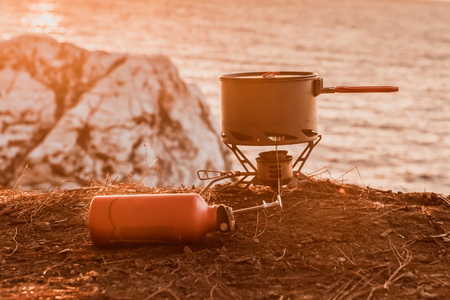Origins of Kayaking and Canoeing in the UK
The story of kayaking and canoeing in the United Kingdom is a fascinating tapestry woven from threads of exploration, adaptation, and cultural exchange. Long before these crafts became familiar sights on British rivers and lakes, their origins lay far beyond these shores. The kayak traces its roots to the indigenous peoples of the Arctic—most notably the Inuit—who engineered these vessels for hunting and travel in harsh northern waters. Similarly, the canoe has ancient ties with Native American and First Nations communities, designed for efficient movement across vast inland waterways. British fascination with exploration during the 18th and 19th centuries played a pivotal role in introducing kayaking and canoeing to the UK. Early adventurers and explorers, often inspired by tales from distant lands or first-hand experience abroad, brought back not only stories but also the practical know-how needed to build and paddle these boats. These pioneering spirits saw potential in adapting foreign designs to British conditions, leading to experimentation with materials such as canvas, wood, and later fibreglass. By the late Victorian era, both kayaking and canoeing began to capture the imagination of British society—not just as utilitarian craft but as vehicles for adventure, competition, and leisure. Early clubs formed along the Thames and other navigable waterways, setting the stage for what would eventually become a thriving national pastime. In this way, the British embrace of kayaking and canoeing stands as an example of how imported traditions can be reinterpreted through local innovation, blending heritage with a distinct sense of homegrown adventure.
2. Growth and Institutionalisation
The development of kayaking and canoeing in the UK owes much to the formalisation of the sport through clubs, associations, and governing bodies. The late nineteenth and early twentieth centuries saw a surge in interest as British enthusiasts sought to organise their activities more systematically. This led to the formation of local canoe clubs along rivers such as the Thames, Severn, and Wye, where likeminded adventurers could meet, share knowledge, and arrange outings.
A pivotal moment arrived in 1936 with the founding of what is now known as British Canoeing (originally the British Canoe Union). As the national governing body, British Canoeing has played a central role in standardising safety procedures, promoting training schemes, and encouraging participation across all levels—from grassroots paddlers to elite competitors. Their influence extends to advocacy for river access rights, environmental stewardship, and the shaping of competition rules both domestically and on the international stage.
The Role of Clubs and Associations
Clubs have been instrumental in fostering community spirit and providing structured learning environments. These organisations offer coaching sessions, social events, and opportunities for members to progress from beginner courses to advanced expeditions or competitive racing. The table below summarises key milestones in institutional growth:
| Year | Organisation/Event | Significance |
|---|---|---|
| 1866 | Royal Canoe Club founded | Worlds oldest canoe club; established on the Thames |
| 1936 | British Canoe Union (now British Canoeing) | National governing body established; unified standards across UK |
| 1948 | First National Championships | Brought together paddlers from around Britain for organised competition |
| 1972 | Canoeing at Munich Olympics | British athletes represented at Olympic level; increased visibility of sport |
| 2014 | Rebranding to British Canoeing | Refreshed identity reflecting broader scope and inclusivity |
The Impact on Modern Adventure Culture
This process of institutionalisation has made kayaking and canoeing more accessible than ever before. Structured pathways exist for young people via school programmes or youth clubs, while adult paddlers benefit from nationally recognised qualification schemes. British Canoeing’s commitment to inclusivity ensures that everyone—from urban dwellers in London or Manchester to rural communities in Wales or Scotland—can find a place within this evolving tradition.

3. River Traditions and Local Waters
Across the United Kingdom, rivers and waterways are far more than mere features of the landscape; they are lifelines that have shaped both local culture and the collective identity of communities. Iconic rivers such as the Thames, Severn, and Wye have played host to centuries of paddling tradition, serving as gathering places for festivals, races, and social events that revolve around canoes and kayaks. The Thames, winding its way through London and beyond, is not only a historic trade route but also a stage for annual events like the Devizes to Westminster International Canoe Race, which has become a rite of passage for many paddlers. In Wales, the River Wye attracts enthusiasts seeking both challenging rapids and tranquil stretches steeped in folklore. The Scottish lochs and highland rivers have their own tales, where paddling is often woven into stories of exploration and local resilience.
For many towns and villages, these waterways represent more than just sport or leisure; they form the backbone of community life. Traditional regattas, blessing-of-the-boats ceremonies, and seasonal river clean-ups see locals coming together in a display of civic pride rooted in centuries-old customs. These traditions are passed down through families and clubs, ensuring that newcomers to kayaking and canoeing feel part of something larger than themselves. Even as modern adventure sports gain popularity, these longstanding rituals persist—bridging generations while adapting to contemporary interests. Thus, the UKs rivers remain vibrant corridors where tradition meets innovation, making every paddle stroke a link between past and present.
4. From Traditional Craftsmanship to Modern Gear
Throughout the history of kayaking and canoeing in the UK, the evolution from traditional craftsmanship to modern gear has been a remarkable journey, reflecting both ingenuity and cultural shifts. Early British canoes and kayaks were typically constructed from locally-sourced woods such as oak or cedar, painstakingly shaped by hand. These vessels, often covered with canvas and coated in varnish or pitch, were not only functional but also a testament to the artisan’s skill. The designs echoed the needs of British waterways—narrow rivers, wide lakes, and rugged coastlines—and many regional boatyards developed their own signature styles.
As technology advanced in the 20th century, British boat-builders became pioneers in adopting new materials. The shift began with plywood construction, which allowed for lighter and more easily repairable boats. Fibreglass soon followed, revolutionising durability and weight. Today, the UK remains at the forefront of innovation, with manufacturers utilising carbon fibre, Kevlar, and advanced plastics to create kayaks and canoes that are lighter, stronger, and more resilient than ever before.
The Evolution of Materials in UK Kayak & Canoe Construction
| Era | Main Materials | Key Features |
|---|---|---|
| Pre-1900s | Wood (oak, cedar), canvas coverings | Handcrafted, regionally distinctive, heavy but durable |
| Early-Mid 20th Century | Plywood, fibreglass | Lighter construction, easier repairs, improved performance |
| Late 20th Century–Present | Carbon fibre, Kevlar, advanced polymers | Ultra-lightweight, high strength-to-weight ratio, suited for competition and adventure sports |
The UKs Impact on Global Canoeing Innovation
The UK’s contribution to boat-building goes beyond materials alone. Pioneering companies such as Pyranha and Valley Sea Kayaks have driven global trends in hull design and ergonomics. British designers were among the first to develop specialised sea kayaks capable of handling the notoriously unpredictable coastal waters around Scotland and Wales. Moreover, British expertise is sought worldwide for innovations like skeg systems and adjustable seating that enhance safety and comfort on long expeditions.
A Fusion of Heritage and Technology
This blend of heritage craftsmanship with cutting-edge technology exemplifies the British approach: respecting tradition while embracing progress. Whether paddling a lovingly restored wooden canoe on the Norfolk Broads or racing a composite kayak down a white-water course in Wales, enthusiasts benefit daily from this spirit of engineering curiosity and cultural pride.
5. British Kayaking and Canoeing in Competitive Sport
Competitive kayaking and canoeing have become a defining aspect of the UK’s paddling culture, showcasing both homegrown talent and a commitment to sporting excellence on the world stage. The journey began with local regattas and club competitions, but over time, Britain has earned a reputation for producing elite athletes across slalom, sprint, and marathon disciplines.
Olympic Achievements
Britain’s Olympic story in canoeing dates back to the 1936 Berlin Games, where the sport made its debut. Since then, Team GB has consistently excelled, especially in recent decades. Names like Tim Brabants—who clinched gold in Beijing 2008—and more recently, Liam Heath and Joe Clarke, have become household names. Their victories not only inspire newcomers but also reflect the rigorous training culture fostered at local clubs and national centres such as Holme Pierrepont and Lee Valley White Water Centre.
Slalom: Navigating Rapids with Precision
The UK is particularly renowned for its prowess in canoe slalom—a discipline demanding technical skill and nerve as paddlers navigate a challenging white-water course. The construction of world-class facilities like Lee Valley for the London 2012 Olympics has left a lasting legacy, enabling athletes to train at the highest level year-round. This investment has paid dividends, with British competitors regularly medalling at European and World Championships.
Sprint: Speed on Still Waters
Canoe sprint is another area where British athletes shine. Here, explosive power and flawless technique are key as competitors race over flat water at breakneck speeds. The consistent support from UK Sport and British Canoeing has cultivated a pipeline of talent that competes fiercely at every major international event, bringing home medals and raising the profile of the sport across the country.
Marathon: Endurance Across Landscapes
The marathon discipline highlights another facet of British paddling—the endurance required to traverse long distances through diverse waterways. Events like the Devizes to Westminster International Canoe Race epitomise this tradition, blending adventure with competition as paddlers test their limits over hundreds of kilometres. British paddlers have also achieved significant success in international marathon events, reinforcing the nation’s versatility in the sport.
A Lasting Impact
The achievements of British kayakers and canoeists on national and international stages have done more than fill trophy cabinets; they have inspired generations to take up paddling, fostered community pride, and helped cement kayaking and canoeing as integral parts of Britain’s sporting landscape.
6. Culture, Conservation, and Outdoor Adventure
Kayaking and canoeing have carved out a distinctive place in British outdoor culture, blending heritage with a contemporary passion for adventure. These water sports are not only seen as pastimes but also as integral to the UK’s identity, offering people of all ages a means to engage with nature and explore the nation’s rivers, lakes, and coastlines. Over time, the relationship between paddlers and their environment has deepened, with many enthusiasts becoming ardent advocates for conservation.
The Role in British Outdoor Life
Whether it’s a gentle paddle down the River Thames or tackling the white-water rapids of Scotland, kayaking and canoeing are embraced by communities across the UK. Clubs and associations promote inclusivity and skill-sharing, helping newcomers discover the joys of these activities while upholding longstanding traditions. For many Britons, a day on the water is as much about camaraderie and personal challenge as it is about appreciating the scenic landscapes that define the nation.
Environmental Stewardship
With increased participation has come greater awareness of environmental issues. Kayakers and canoeists often witness first-hand the impact of pollution, habitat loss, and climate change on Britain’s waterways. As a result, many clubs actively participate in river clean-up events and support campaigns led by organisations such as The Rivers Trust or British Canoeing’s Clear Access, Clear Waters initiative. This ethic of stewardship is now deeply woven into the fabric of paddling culture in the UK.
Adventure for All
The allure of adventure remains strong. From urban canals to wild coastal routes, Britain’s diverse waters offer something for everyone – whether seeking tranquillity or adrenaline-fuelled excitement. This accessibility has made kayaking and canoeing increasingly popular among families, youth groups, and seasoned explorers alike. Equipment advances and inclusive programming ensure that more people can experience these sports safely, reinforcing their role at the heart of modern British outdoor adventure.
In sum, kayaking and canoeing continue to reflect both tradition and innovation in the UK, acting as bridges between cultural heritage, environmental responsibility, and an enduring spirit of exploration.
7. Future Directions: Inclusivity and Sustainable Practice
Looking ahead, the future of kayaking and canoeing in the UK is being shaped by a collective commitment to inclusivity and environmental responsibility. Organisations such as British Canoeing are actively championing accessibility through targeted outreach programmes, ensuring that paddling is not just for seasoned enthusiasts but also welcoming to beginners, families, and individuals from diverse backgrounds. Community initiatives—like paddleability sessions for those with disabilities or grassroots youth clubs—are working to dismantle barriers and foster participation across all demographics.
Recent years have witnessed a strong focus on sustainability within the paddling community. With the increasing popularity of wild places and waterways, both local clubs and national bodies are promoting responsible practices: organised river clean-ups, eco-friendly gear choices, and guidance on minimising ecological impact while on the water. Campaigns encouraging ‘leave no trace’ principles are now commonplace at events and training sessions across the country.
Technology and innovation also play a part in shaping new trends. Digital platforms connect paddlers with real-time safety updates, community forums, and educational resources, making it easier than ever to share knowledge about safe navigation and conservation efforts. Partnerships between outdoor brands, conservation charities, and local councils help fund restoration projects for waterways and create inclusive paddling opportunities in urban areas previously overlooked.
The UK’s unique approach blends respect for tradition with a drive toward modern adventure—ensuring that kayaking and canoeing remain vibrant, accessible, and environmentally conscious pastimes. As the landscape of British paddling culture continues to evolve, the emphasis on inclusivity and sustainable practice promises a future where everyone can enjoy the nation’s rivers, lakes, and coastlines responsibly.


